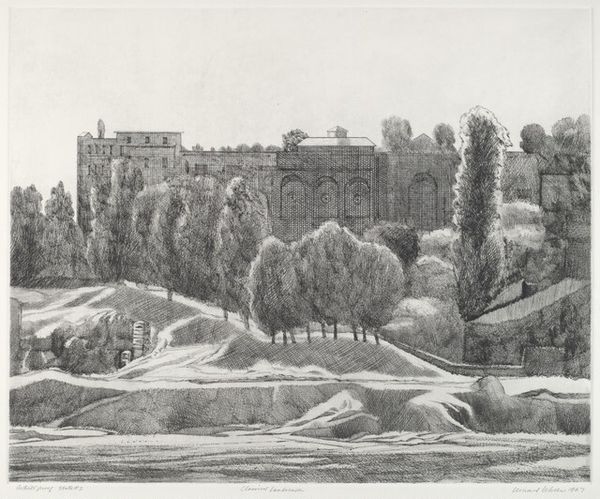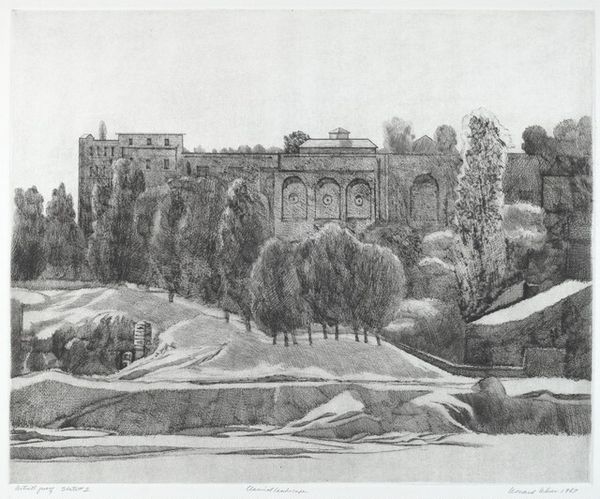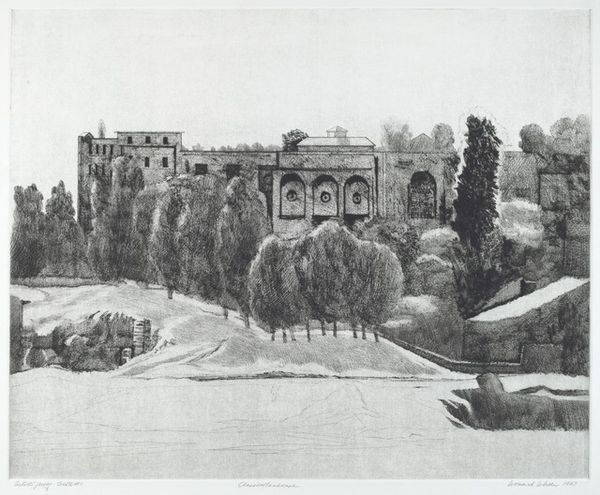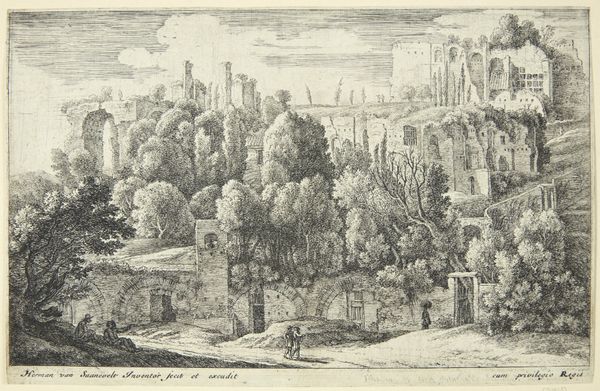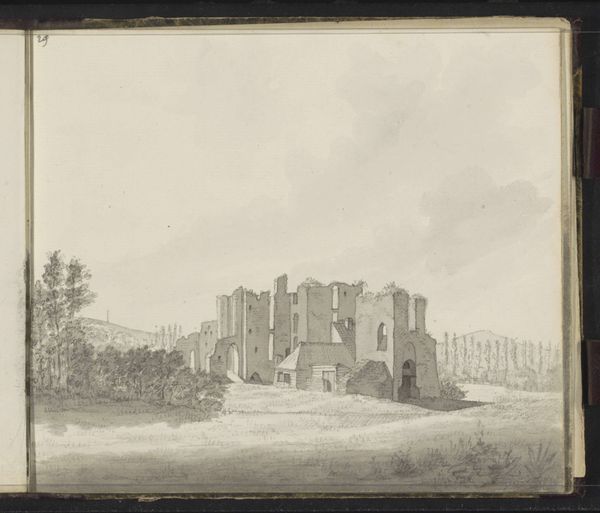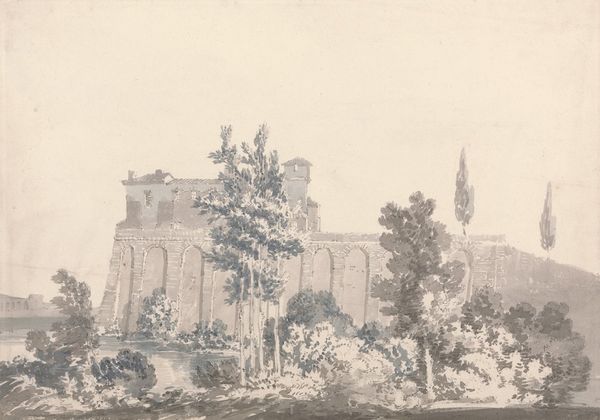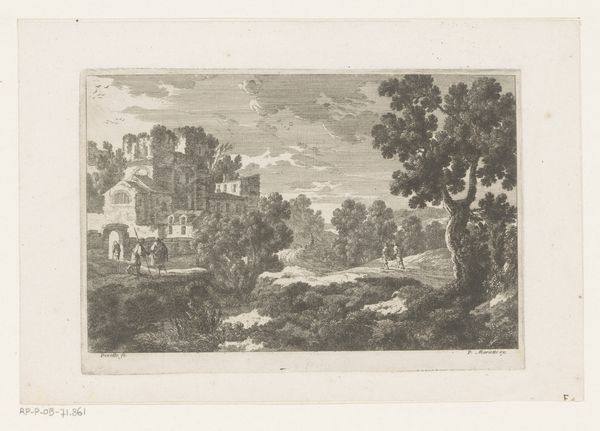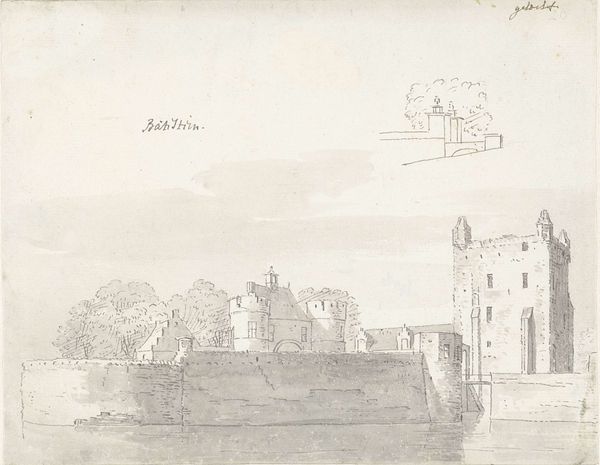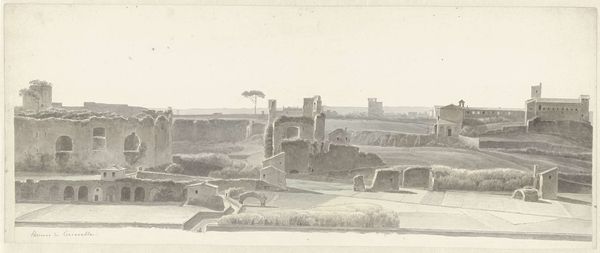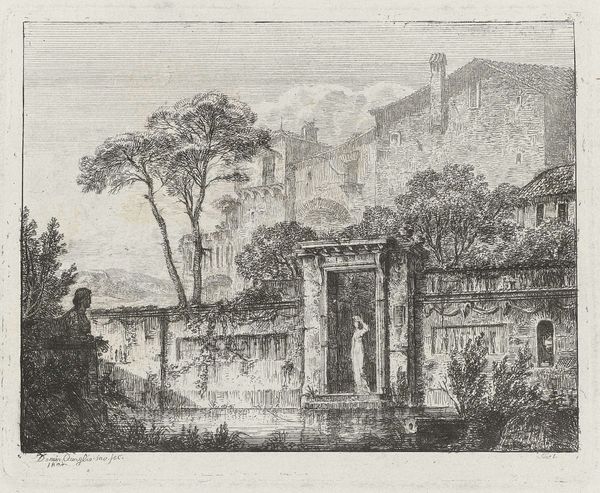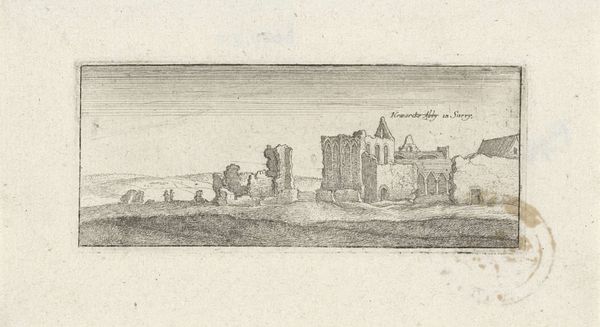
drawing, print, etching, graphite
#
drawing
# print
#
etching
#
landscape
#
charcoal drawing
#
pencil drawing
#
geometric
#
graphite
#
charcoal
#
graphite
Copyright: National Gallery of Art: CC0 1.0
Editor: This is Leonard Lehrer’s "Classical Landscape," an etching from 1967. I’m struck by how meticulously detailed it is; it feels both grounded and slightly dreamlike. The artist’s masterful play with graphite almost blurs the lines between reality and illusion. What social commentaries do you find represented in this work? Curator: It's interesting that you use the term "illusion" when considering a landscape made in 1967. Landscape art, throughout its history, served different social functions: sometimes, as celebrations of land ownership and national identity; other times as meditations on nature’s sublimity accessible to the public through parks and museum representation. Consider how photography had already altered landscape painting conventions a century before Lehrer made this. Is it, therefore, referencing an earlier idea of the landscape or something altogether different? Editor: So, do you think the title, “Classical Landscape,” is somewhat ironic, since photography changed how landscapes were perceived and represented? Is he commenting on tradition? Curator: Exactly. It prompts us to question what "classical" means in a contemporary context. The artist presents a geometric structure surrounded by almost romantic imagery, raising questions about the place of traditional aesthetics and ideals within modern society. Lehrer seems less interested in faithful representation, and more in how such spaces affect cultural values. Do you think this piece evokes the tradition of the picturesque? Editor: I can see that. It makes me wonder, who was this landscape “for,” if it was displayed in a gallery in 1967? It is really making me rethink the social purpose of landscape art! Curator: Precisely. That's the critical question this piece poses. How did its display challenge existing social and cultural structures? Perhaps we can revisit this piece later after considering the work of his contemporaries.
Comments
No comments
Be the first to comment and join the conversation on the ultimate creative platform.
